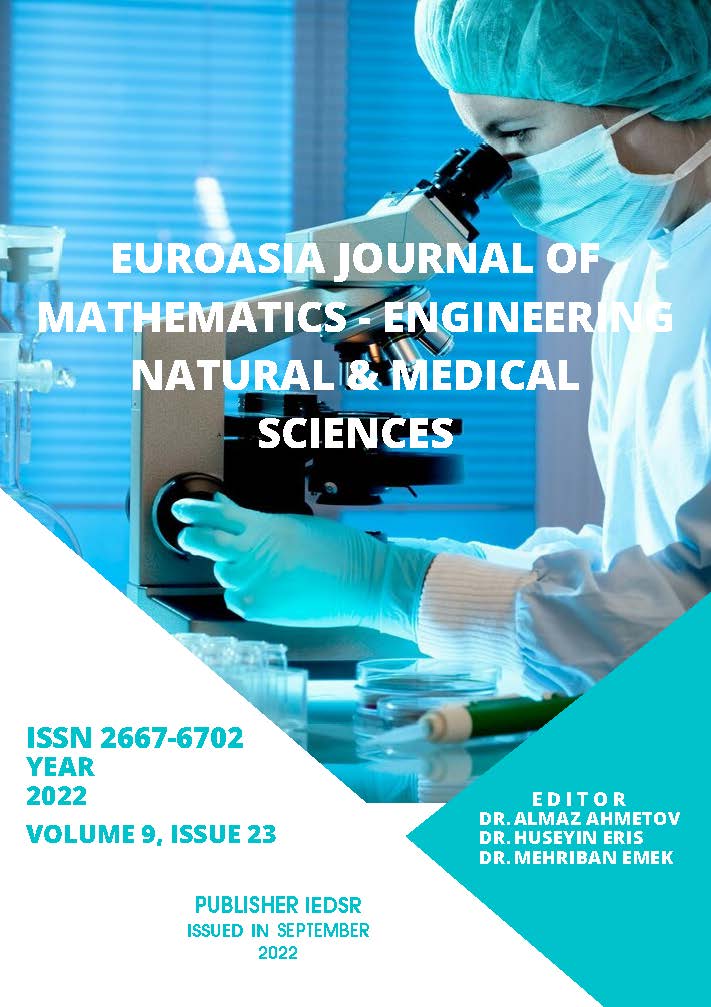Köpeklerde Dermatofitoz ve Sağaltım Seçenekleri
DOI:
https://doi.org/10.5281/zenodo.7130695Anahtar Kelimeler:
deri mantar enfeksiyonu, köpek, tanı, sağaltımÖzet
Dermatofitoz bulaşıcı zoonoz bir hastalıktır ve köpeklerde yaygın şekilde görülen bir mantar hastalığıdır. Diğer hayvan türlerine ve insanlara bulaştırılabilir. Öncelikli bulaşma yolu doğrudan temas ya da yaralı hasar yerlerindendir. Dermatofitoz Microsporium (M.), Trichophyton (T.) ve Epidermophyton (E.) genusu mantarlarıyla deri, kıl ya da tırnakların enfeksiyonudur. Enfeksiyon enfekte hayvanlara, malzemelere ve ortamlara temasla meydana gelir. Dermatofitle enfekte kıl ortamda yıllarca canlı kalabilir. Ortamın halı ve döşeme ile kaplı olması enfekte kılları barındırır. Toprak da maruziyet kaynağıdır. Enfeksiyona yönelik predispoze faktörler genç yaş, immün baskılanma, iyi beslenememe, mevcut hastalık, yüksek beden ısısı, nem ve deri yaralanmasıdır. İnkübasyon süresi 1-3 haftadır. Belirtilen nedenlerle köpeklerde dermatofit etkenlerine bağlı mantar hastalıkları oldukça önemlidir. Bu makale kapsamında köpeklerde mantar enfeksiyonlarına neden olan başlıca dermatofit etkenleri sıralandı. Son yıllara ait bilimsel kaynaklar geniş şekilde taranıp, değerlendirilerek hangi dermatofit enfeksiyonuna hangi ilaçların etkili olduğuna yönelik bilgiler verildi. Dermatofit etkenli mantar hastalığı olan köpeklerde öne çıkan klinik belirtilerin çeşidi ve şiddetine bağlı olarak yapılması gereken bölgesel ve yerel sağaltım ile sistemik antifungal sağaltım uygulamaları için kullanılacak farklı ilaç ya da ilaç kombinasyonları hakkında geniş bilgiler verildi. Ayrıca klinisyen veteriner hekimlere pratik yönden kolaylık sağlaması bakımından, köpeklerde mantar hastalıklarında sağaltım seçeneğini oluşturan öncelikli olarak seçilen sistemik antifungal ilaçların genel dozlarına ek olarak dermatofitozisin sağaltımı için tercih edilecek sistemik antifungal ilaçların genel dozları ve sıklıkları, kullanım yollarını içeren önemli bilgiler tablolar halinde sunuldu.
Referanslar
Angarano, D. & Scott D. (1987). Use of ketoconazole in treatment of dermatophytosis in a dog. Journal of the American Veterinary Medical Association, 190(11), 1433-1434.
Begum, J. & Kumar, R. (2021). Prevalence of dermatophytosis in animals and antifungal susceptibility testing of isolated Trichophyton and Microsporium species. Tropical Animal Health and Production, 53:3.
Beigh, S. A., Soodan, J. S., Singh, R., Khan, A. M. & Dar, M. A. (2014). Evaluation of trace elements, oxidant/antioxidant status, vitamin C and β-carotene in dogs with dermatophytosis. Mycoses, 57, 358-365.
Bontems, O., Fratti, M., Salamin, K., Guenova, E. & Monod, M. (2020). Epidemiology of dermatophytosis in Switzerland according to a survey of dermatophytes isolated in Lausanne between 2001 and 2018. Journal of Fungi, 6 (2), 95.
Cauwenbergh, G. & Cutsem, J. V. (1988). Role of animal and human pharmacology in antifungal drug design. Annals of the New York Academy of Sciences, 544, 264-269.
Cerundolo, R. (2004). Generalized Microsporium canis dermatophytosis in six Yorkshire terrier dogs. Veterinary Dermatology, 15, 181-187.
da Cunha, M. M., Capote-Bonato, F., Capoci, I. R. G., Bonato, D. V., Ghizzi, L. G., Paiva-Lima, P., Baeza, L. C. & Svidzinski, T. I. E. (2019). Epidemiological investigation and molecular typing of dermatophytosis caused by Microsporium canis in dogs and cats. Preventive Veterinary Medicine, 167, 39-45.
Dakes, M. J., Scott, L. J. & Goa, K. L. (2003). Terbinafine. American Journal of Clinical Dermatology, 4, 39-65.
De Keyser, H. & Van Den Brande, M. (1983). Ketoconazole in the treatment of dermatomycosis in cats and dogs. Veterinary Quarterly, 5, 142-144.
Dubey, A. G., Rode, A. M., Dakshinkar, N. P., Sanghai, A. A. & Bhojne, G. R. (2015). Comparative efficacy of different fungal drugs in canine dermatophytosis. Indian Journal of Canine Practice, 7, 120-123.
Evason, M. & Loeffler, A. (2020). Dermatophytosis (Ringworm). In: Infectious Diseases of the Dog and Cat, Weese JS, Evason M (Eds), CRC Press, Taylor and Francis Group.
Giguere, S. (2013). Antifungal chemotherapy. In: Antimicrobial Therapy in Veterinary Medicine, Giguere S, Prescott JF, Dowling PM, Fifth Edition, Wiley Blackwell.
Grisham, L. M., Wilson, L. & Bensch, K. G. (1973). Antimitotic action of griseofulvin does not involve disruption of microtubules. Nature, 244, 294-296.
Gull, K. & Trinci, A. (1973). Griseofulvin inhibits fungal mitosis. Nature, 244, 292-294.
Hayette, M. P. & Sacheli, R. (2015). Dermatophytosis, trends in epidemiology and diagnostic approach. Current Fungal Infection Reports, 9, 164-179.
Heinrich, N., Eisenschenk, M., Harvey, R. & Nutfall, T. (2019). Skin diseases of the dog and cat. Third Edition, CRC Press, Taylor and Francis Group.
Hofbauer, B., Leitner, I. & Ryder, N. (2002). In vitro susceptibility of Microsporium canis and other dermatophyte isolates from veterinary infections during therapy with terbinafine or griseofulvin. Medical Mycology, 40, 179-183.
Hyun, C., Nam, H-S., Kim, T-Y. & Han, S-H. (2013). Evaluation of therapeutic efficacy of medical shampoo containing terbinafine hydrochloride and chlorhexidine in dogs with dermatophytosis complicated with bacterial infection. Journal of Biomedical Research, 14(3), 154-159.
Mihaylov, G., Petrov, V. & Zhelev, G. (2008). Comparative investigation on several protocols for treatment of dermatophytosis in pets. Trakia Journal of Sciences, 6, 102-105.
Muller, A., Guaguere, E., Degorce-Rubiales, F. & Bourdoiseau, G. (2011). Dermatophytosis due to Microsporium persicolor: A retrospective study of 16 cases. Canadian Veterinary Journal, 52, 385-388.
Nardoni, S., Mugnaini, L., Papini, R., Fiaschi, M. & Mancianti, F. (2013). Canine and feline dermatophytosis due to Microsporium gypseum: A retrospective study of clinical data and therapy outcome with griseofulvin. Journal de Mycologie Medicale, 23, 164-167.
Pasquetti, M., Min, A., Scacchetti, S., Dogliero, A. & Peano, A. (2017). Infection by Microsporium canis in a paediatric patients: A veterinary perspective. Veterinary Sciences, 4(3), 46.
Rooij, P. V., Declercq, J. & Beguin H. (2011). Canine dermatophytosis caused by Trichophyton rubrum: an axample of man-to-dog transmission. Mycoses, 55, e15-e17.
Sieklucki, U., Oh, S-H. & Hoyer, L. L. (2014). Frequent isolation of Arthroderma benhamiae from dogs with dermatophytosis. Veterinary Dermatology, 25(1), 39-e14.
Wang, M., Zhao, Y., Cao, L., Luo, S., Ni, B., Zhang, Y. & Chen, Z. (2021). Transcriptome sequencing revealed the inhibitory mechanism of ketoconazole on clinical Microsporium canis. Journal of Veterinary Science, 22(1), e4.
White-Weithers, N. & Medleau, L. (1995). Evaluation of topical therapies for the treatment of dermatophyte-infected hairs from dogs and cats. Journal of the American Animal Hospital Association, 31(3), 250-253.
Yamada, S., Anzawa, K. & Mochizuki, T. (2019). An epidemiological study of feline and canine dermatophytoses in Japan. Medical Mycology Journal, 60(2), 39-44.
İndir
Yayınlanmış
Nasıl Atıf Yapılır
Sayı
Bölüm
Lisans
Telif Hakkı (c) 2022 Euroasia Journal of Mathematics, Engineering, Natural & Medical Sciences

Bu çalışma Creative Commons Attribution-NonCommercial 4.0 International License ile lisanslanmıştır.

